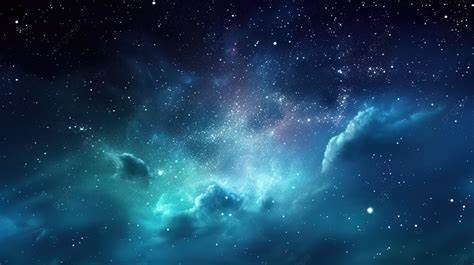
“The universe is not under any obligation to make sense to you,” astrophysicist Neil deGrasse Tyson once quipped. Yet with the dawn of every new year, observatories like Hubble and Spitzer have pulled back the cosmic curtain, revealing wonders that awe and boggle. Some of these images are so rich, so textured, that they have redefined human perception of scale and beauty in the universe.
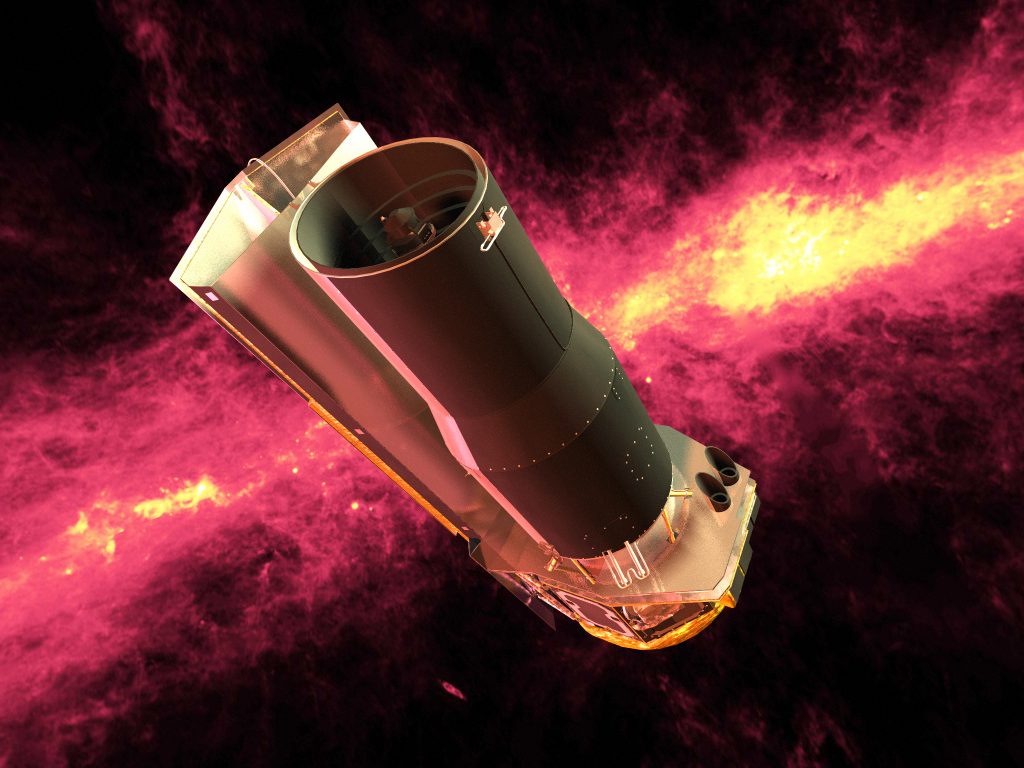
More than three decades, the Hubble and Spitzer Space Telescopes have delivered not only stunning images, but also revolutionary scientific breakthroughs. From the spectacular Pillars of Creation to the invisible components of galaxies in the distant cosmos, these space telescopes have transformed our understanding of star formation, galaxy evolution, and the universe. Here, we give you a tour of some of the most breathtaking photographs ever snapped and the incredible stories and findings behind them.
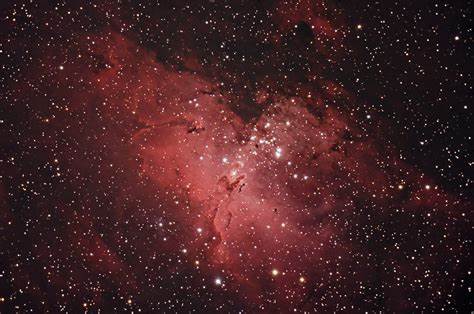
1. Pillars of Creation: Star Formation in the Eagle Nebula
Few images have captured the public imagination like the Pillars of Creation. Spotted by Hubble in 1995 and revisited in stunning detail in 2020, the colossal pillars of gas and dust shelter the Eagle Nebula, about 6,500 light-years from our planet. The otherworldly forms are, in fact, star nurseries, with newly born stars blaze to life in thick cocooning of interstellar material.
As NASA explains, the pillars are “columns of cool interstellar hydrogen gas and dust that are also incubators for new stars.” In 2020, the revisit used infrared light to pierce the dust and expose concealed stars and intricate structures that were not visible before. The Pillars of Creation are not just a symbol for the drama of star birth but are also a milestone in public fascination with space science because the image became an icon for art and astronomy.
Hubble’s photographs of the Eagle Nebula have also provided us with indications of stellar feedback when newly formed stars mold and excavate the clouds they emerged from. As explained on the Hubble history timeline, these observations have allowed astronomers to discover the star’s life cycle and about dynamic processes that build galaxies.
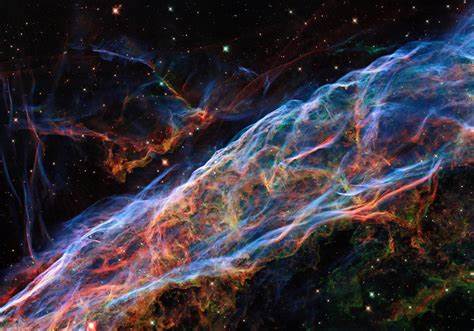
2. The Veil Nebula: Supernova Remnant in Cygnus
The Veil Nebula, a giant supernova remnant 2,100 light-years away in the constellation Cygnus, is a reminder of both death and life in the universe. Hubble’s 2015 photo shows filaments of glowing gas remnants of a star that blew up roughly 8,000 years ago.
This is not just a lovely nebula but a scientifically significant one too. One of the brightest X-ray sources in the sky, it offers a laboratory in which to study the effects of star death. Delicate, lace-like filaments are created by shockwaves colliding with the interstellar medium, revealing the subtle ballet of dying stars and their environment.
Hubble’s ability to detect such fine detail has allowed astronomers to track the nebula’s changes over time, providing hints as to the physics of supernova explosions and cosmic recycling of material a process that plants seeds for future generations of stars and planets.
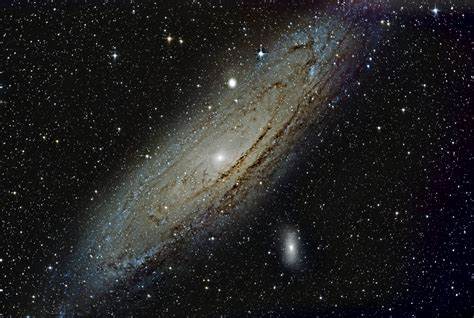
3. The Andromeda Galaxy: Unveiling a Neighbor in Historic Clarity
In January 2025, Hubble published a massive mosaic of the Andromeda Galaxy, our closest big galactic neighbor. The 2.5-billion-pixel picture, drawn together over ten years of observation, provides a pan-shaped view of about 600 individual fields of view, each filled with stars and star clusters.
Andromeda, separated by 2.5 million light-years, is not only a beauty to the naked eye. Its observation has yielded vital information about galaxy evolution and origin. In 2012, Hubble observations confirmed that Andromeda and the Milky Way were headed for collision, to merge in some 4 billion years (Hubble timeline).
By combining images from Hubble and Spitzer, astronomers have also mapped gas and dust streaming into Andromeda’s black hole, revealing spiral filaments driving this cosmic giant’s expansion (Spitzer mission). These observations deepen our knowledge of galactic evolution and growth throughout cosmic history.
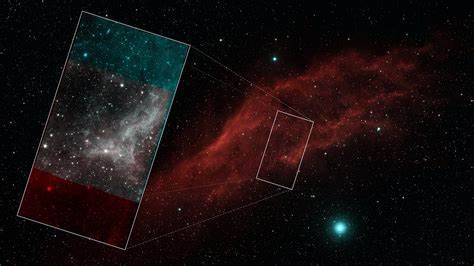
4. Spitzer’s Infrared Vision: Unveiling the Hidden Universe
Whereas Hubble’s visible-light images amaze the eye, the Spitzer Space Telescope has opened up a new window on the universe by duplicating the universe in infrared. Such capability allows astronomers to look through clouds of dust which obscure visible light and see stellar nurseries, the galactic hearts, and even the atmosphere of distant planets.
Spitzer’s legacy is the detection of a giant ring system around Saturn, the discovery of exoplanet light, and the charting of temperature wiggles on other planets (Spitzer overview). Spitzer uncovered the TRAPPIST-1 system in 2017 a constellation of seven Earth-sized planets surrounding a small star 40 light-years away, three of which reside within the habitable zone.
Spitzer’s “warm mission,” begun after its coolant ran out in 2009, continued to produce groundbreaking science, such as defining the nature of asteroids and refining the rate of the expansion of the universe. Its ability to see what Hubble cannot has made Spitzer an indispensable team player in the discovery of cosmic secrets.

5. The Hubble Deep Field: Looking Back in Time
Hubble’s Deep Field photo in 1996 stunned astronomers and the public. By staring at a small, seemingly empty patch of sky for ten days, Hubble revealed a tapestry of at least 1,500 galaxies, including some that go back only a few hundred million years since the Big Bang.
This image, and its counterparts the Ultra Deep Field and eXtreme Deep Field have significantly transformed our understanding of the early universe. According to NASA, these deep fields “unveil bewildering galaxies across billions of years,” which provides a direct view of galaxy development and evolution over cosmic time (Hubble timeline).
By pushing the boundaries of sensitivity and resolution, Hubble deep fields have enabled astronomers to chart the evolution of structure in the universe, measure the rate of star formation over epochs, and search for the most distant and oldest galaxies ever seen.
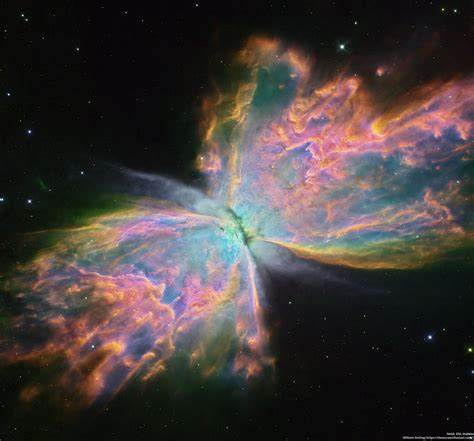
6. The Butterfly Nebula: The Power of Servicing Missions
The Butterfly Nebula, NGC 6302, is a testament to Hubble’s rejuvenation by human ingenuity. In 2009, astronauts installed the Wide Field Camera 3 on Hubble’s final servicing mission, enabling the telescope to capture the nebula’s beautiful, bipolar lobes with unprecedented clarity.
As Space.com was told by Elena Sabbi of the Space Telescope Science Institute, “This image is beautiful, it’s really showing how capable Hubble is. Today, it has the sharpest eyes it’s ever had.” The colorfulness of the nebula and the complexity of its shapes are due to a star nearing the end of its existence shedding its outer layers, something that enriches the interstellar medium with heavy elements.
Hubble servicing missions, discussed in the timeline, have kept the observatory a source of leadership in discovery for over three decades, demonstrating the value of continued investment in space science facilities.

7. Spitzer’s Legacy: Exoplanets, Stellar Nurseries, and Beyond
Spitzer’s infrared eyes have uncovered some of the universe’s best-kept secrets. One of its many achievements, Spitzer was the first telescope to find light from an exoplanet and create a weather map of another planet (Spitzer overview).
Its observations of star-birth areas such as the churning pot of Cygnus X and the Large Magellanic Cloud’s dusty filaments have demonstrated how stars and planets are created. Spitzer’s ability to see behind cosmic dust has also enabled the study of centers of galaxies and the detection of organic molecules that may be linked with the origin of life.
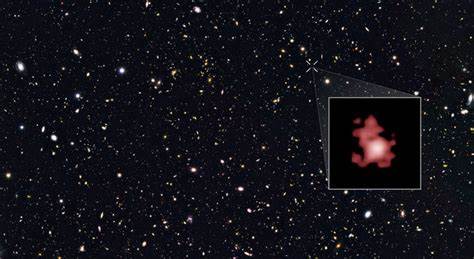
Even after being decommissioned in 2020, Spitzer’s measurements keep on leading to discoveries, ranging from water-shrouded exoplanets to volcanic terrestrial worlds. Its combination with Hubble has set a new standard for multi-wavelength astronomy.
From the iconic to the unknown, the images captured by Hubble and Spitzer are not cosmic postcards they are portals into the processes that shape the universe. Each image is a technology victory, human ingenuity, and scientific cooperation. As these telescopes continue to amaze and illuminate, they remind us that the universe is not only stranger than we can imagine, but more lovely than we can ever have had.

